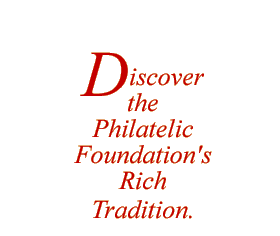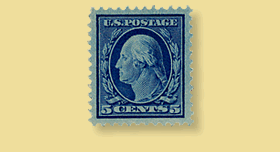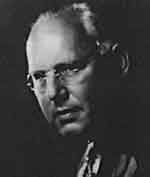 |
 |
 |
 |
History > Alfred F. Lichtenstein>Alfred F. LichtensteinAlfred F. Lichtenstein (1876-1947) grew up in Brooklyn and as a boy got interested in stamp collecting. Lichtenstein was no ordinary stamp collector. At the Foundation he was often referred to as "the philatelist's philatelist." He was extremely concerned about condition even when dealing with great rarities. As former PF Curator Peter A. Robertson put it: "Some great collectors, such as Alfred H. Caspary, for example, who was Honorary Chairman of the PF Expert Committee in 1953-54, sought to obtain as many different copies of rare stamps as possible. Of course, this is a staggering collection. Lichtenstein, however, could never rest until he had the best copy in existence. He was always in pursuit of that elusive 'superb' item. Consequently, his collection was perhaps the most distinguished holding of elite material ever assembled. For several areas he built collections that no one else had ever rivaled." 
Lichtenstein's eclectic philatelic appetite roamed over many continents. His U.S. collection contained one of the greatest "Western Express" holdings. He also built an important collection of Canada and British North America. Through the decades, he kept expanding his philatelic tastes. His Mauritius collection contained the famous cover with two of the One Penny "Post Office" Mauritius stamps (PF Certificate # 200,000), which was later purchased by Raymond and Roger Weill. He assembled an impressive and extensive Ceylon collection, and the greatest grouping of Cape of Good Hope, and the most impressive collection of the stamps of the Gambia. Lichtenstein retained a strong predilection for stamps of the classic period. He is reported to have commented once to Ernest A. Kehr that all stamps issued after 1870 were "junk." He took a special pride in his Lallier Album, printed in 1870, which he continued to fill with choice material until it was bulging with superb gems. Lichtenstein was also a prominent philatelic judge, heading the 1913, 1926 and 1936 international exhibitions held in the United States. He was the guiding force behind the 1947 International Exhibition (CIPEX) although he did not live to see it. The name of Alfred Lichtenstein lives on in the prestigious Lichtenstein Medal, established by the Collector's Club of New York in 1952. In the early 1940's, Lichtenstein and other major American philatelists including Theodore Steinway, Hugh M. Clark and Harry Lindquist began plans to establish a non-profit educational institution to serve philately and to be the central reference center for philatelic expertizing and the storing and dissemination of important information. On March 16, 1945, the dream was realized when The Philatelic Foundation was chartered by the State University of New York as a not-for-profit educational institution. Lichtenstein was elected the first Chairman of the Foundation's Expert Committee, and later that year the PF issued its first Certificates. Originally housed in the Collectors Club in those early years, the Foundation received less than 1,000 applications for Certificates per year; today at least that many are submitted every month! The enormous stamp holdings of Alfred Lichtenstein and his daughter, Louise Boyd Dale, were auctioned by Harmer's in 1968-71, 1989-92 and 1997. The catalogs for those sales will stand forever as a monument to the passion with which Alfred Lichtenstein had pursued his chosen avocation. The Philatelic Foundation has been honored by his pioneer efforts, which have encouraged us to serve philately in a manner consistent with his vision. |
The Philatelic Foundation is located at 341 West 38th Street, 5th Floor, New York, NY 10018 Copyright 2005 - by The Philatelic Foundation, all rights reserved.
|
| Home | What's New | Expertizing | Why Expertize? | History | Educational Resources Publications | Who's Who | Become a Contributor | Contact The PF Application for a Certificate |